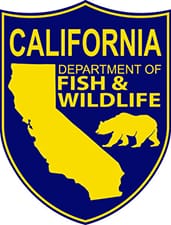

Sacramento, CA -(AmmoLand.com)- Residents in Santa Cruz County coastal communities are reporting a rise in coyote sightings lately and the California Department of Fish and Wildlife (CDFW) has several tips for avoiding potentially dangerous interactions with these animals.
The principal reasons wildlife, including coyotes, ventures into populated areas is to search for food, water or shelter. Removing these attractants from around homes will greatly reduce the number of coyotes in the area.
“Neighbors should work together to eliminate sources of food that may attract wildlife to neighborhoods,” said Conrad Jones, CDFW Senior Environmental Scientist for the Bay Delta Region. “It’s never OK to feed a wild animal. This can quickly turn a small problem into a larger one.”
Coyotes will hide under decks, in sheds, abandoned or run-down properties and in forested urban areas. Santa Cruz residents should be extra vigilant if they live near natural coyote habitat or corridors such as creeks that coyotes may be traveling through.
Coyotes are also highly adaptable and often live in close proximity to populated areas where food and water sources are abundant. They usually fear humans and avoid interactions, but if they begin to associate humans with food, they lose their natural fear and can become bold and aggressive. When this occurs conflicts can arise with harmful consequences for humans, pets and wildlife.
Coyote Safety Tips:
- Keep a close eye on small children when outdoors.
- Keep small pets inside particularly at dawn and dusk when coyotes are most active.
- Keep pets on a leash when walking.
- Keep pet food and water dishes inside.
- Secure food and trash at all times and remove all sources of water.
- Pick up fallen fruit and keep compost piles tightly sealed.
- Sweep up fallen birdseed, which can attracts mice and rats, a common food source for coyotes.
- Remove brush, wood piles and debris where rodents are abundant and coyotes can find cover.
- Install motion-activated lighting or sprinklers.
- If a coyote approaches or acts aggressively, throw rocks, make noise, look big, and pick up small children and pets. Do not turn your back to the animal.
- If a coyote is frequently seen around schoolyards or playgrounds or is acting aggressively, contact your local animal control or CDFW.
- If a coyote attacks, call 911.
There has been only one recorded fatality in California from a coyote attack (a 3-year-old girl in 1981). Coyote attacks are relatively rare and the mere presence of a coyote does not constitute a public safety threat. However, in areas where coyotes are highly visible and active, caution is advised.
For more information on living responsibly with wildlife, please visit keepmewild.com.
About the California Department of Fish and Wildlife (CDFW):
The California Department of Fish and Wildlife (CDFW) manages California’s diverse fish, wildlife and plant resources, and the habitats upon which they depend.
For more information, visit: www.wildlife.ca.gov.
